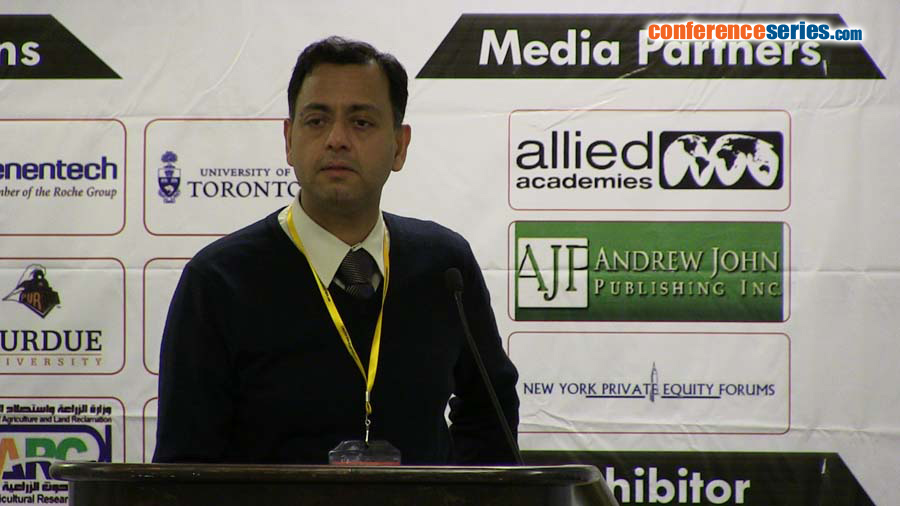Vaibhav Tiwari
Midwestern University, USA
Title: Induction of inflammatory cytokines during HSV-1 infection in HIS model
Biography
Biography: Vaibhav Tiwari
Abstract
Ocular herpes simplex virus (HSV) infection of the eye is the most frequent infectious cause of vision impairment in the industrialized world. Using a cytokine antibody array we assessed inflammatory markers induced as a result of HSV-1 infection in human iris stromal (HIS) cells. We used HSV-1 (KOS) 804 syncytial virus strain at a low (0.01) multiplicity of infection (MOI) to infect HIS cells to monitor inflammatory response. Our data indicated that there was a greater signal intensity of MCP-2, TIMP-2, IL-6, and IL-8, granulocyte-macrophage colony-stimulating factor (GM-CSF), I-309, intercellular adhesion molecule 1 (ICAM-1), IL-6 soluble receptor (IL-6sR), interferon-inducible protein 10 (IP-10), macrophage inflammatory protein 1β (MIP-1β) and soluble tumor necrosis factor receptor 1 (sTNFR1) compared to mock infected cells. A release of multiple pro-inflammatory cytokines may have greater implications in terms of HSV-1-mediated pathology. For instance, the up-regulation of IL-6 have suggested stimulating the secretion of vascular endothelial growth factor (VEGF) in the cornea, implicating possible roles for initiating neovascularization by HSV-1 infection of HIS cells as well. Our results provide evidence for the first time that HIS cells are susceptible to HSV-1 entry/spread and verify the essential viral and host receptors involved, thus establishing an in vitro model to study iris stromal infection and the intrinsic mediators of inflammation. The fact that many of the inflammatory mediators are seen in the absence of the host immune response suggests a great importance for a usage of an in vitro HIS cell model. Future studies using this model may further help distinguish between the contributions from infected cells and those from the infiltrating immune cells during HSV-1 infection. This model may also serve as a platform to test for potential therapeutics that may help against HSV-1-induced iritis. For instance, G2, a peptide isolated against the receptor 3-OS HS, has previously been shown to decrease HSV-1-induced mouse corneal infection. With this in vitro model, we may be able to assess how inhibiting various stages of viral attachment and entry may affect the chemokine induction. Along the same line, this model will also be a new and an easy step to screen for effective drugs that reduce inflammatory conditions in context with HSV-1 infection of the iris stroma.


